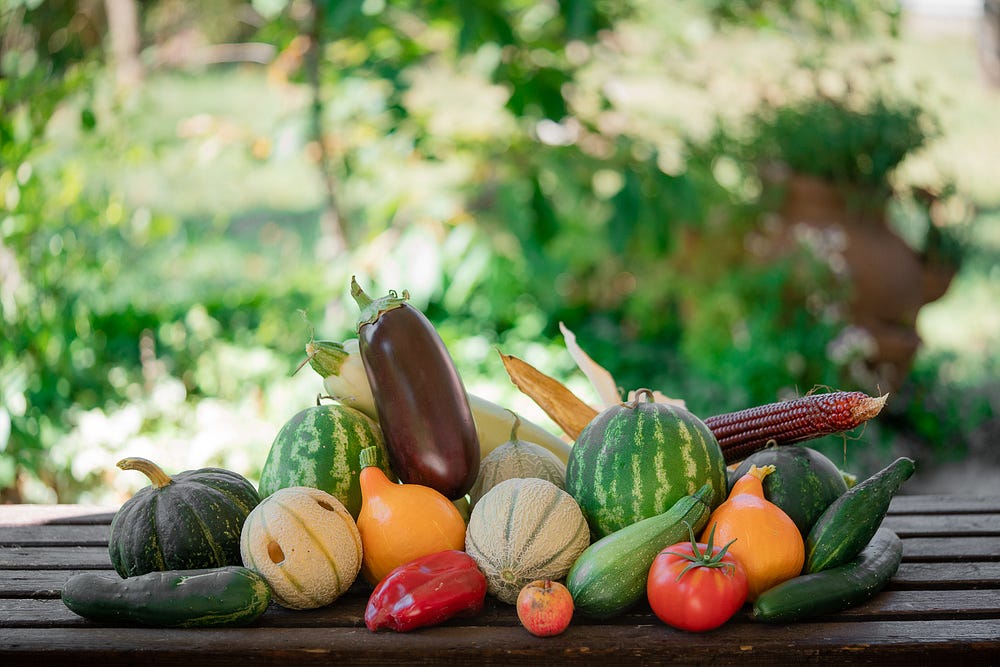Food Just Won't Grow Anymore
It is coming sooner than we think.

This is my first-hand story from the summer of 2021 and the lesson I learned this year. There will come a time when crops will fail globally which simply means one thing: hunger.
And that time is coming much sooner than we suppose.
To say that the summer of 2021 was batshit crazy is an understatement. Heat domes entered the common vocabulary, people in Canada and Siberia began shopping for air-conditioning devices. July 2021 is the hottest month in the recorded history or second for Europe. And these are merely the highlights.
Here in Slovenia we've had almost three months of abnormally hot and dry weather, starting in late May and continuing almost to the end of August. Late June, July and early August was just one heat wave after another.
So how did the plants react? What was gardening like?
It began great. I sowed chicory and lettuce on June 7th and by June 25th we've already had our first bowl of fresh salad out of it. It took only 18 days from seed to the table, which was mind-bending for me. This is what it looks like when conditions are perfect; weather was hot (but not too hot), soil still retained some moisture and days were long, giving plants about 16 hours of daily exposure. Everything exploded!
But then in July, it was already too hot. The soil dried up and no matter how much artificial irrigation I provided it was never the same. Leafy green vegetables struggled to grow and simply didn't produce anymore. Cruciferous vegetables are completely stunted in their development. Chard and beetroots barely survived to September when they flourish again.
How about staples? I have none of those but my friend reports that record high temperatures and extreme drought during late Summer were bad for tubers. Plants didn't have enough water to make large and/or numerous potatoes so the harvest is well below expected.
But not everything is bad. Extremely hot and dry summer was perfect for subtropical plants like tomatoes, peppers, cucumbers, zucchini and eggplants, all of which we've had more than we could eat. For the first year, I managed to harvest my very own watermelons and cantaloupe melons.
Which is insane indeed! OK, we've had tomatoes, zucchini or cucumbers in this region for decades but never in this quantity.

However; only 20 years ago growing watermelons was part of science fiction fantasies for us. It is only for the last 5 years that we even dare to try and produce actual results. It was the first year for me (after 3–4 years of trying).
But to be fair; watermelons are not supposed to grow here and you can tell that by the size of the fruits which are still rather small, no matter how hot it gets during July-August. Three extremely hot months cannot make up for a warm tropical season, and daylight variation plays a role here too.

In subtropical and tropical areas day/night variation is not so extreme as in northern/southern regions. Plants get not only more warmth during spring and autumn, but also more sunlight (albeit a little less during the summer).
As much as I am happy to taste my very own watermelons for the first time, I am also worried that this is not a good sign. We shouldn't be having it! It is not our story!
At the same time, our traditional crops were failing; leafy greens and tubers were struggling despite our best efforts with artificial irrigation. I tried to sow chicory and lettuce a few more times but it always failed. Even with my best efforts, it just didn't work.
But this is where it gets scary; this year our water supply was still at the level where we could irrigate plants and somehow helped them survive. But what if this trend continues and the drought gets so severe that you simply can't irrigate because there is nothing to irrigate with? Given the current trends those what-ifs are not so hard to imagine.
For quite a while I felt some sort of security about having a garden but now I start to question that. When extreme weather patterns get so severe that plants simply refuse to grow we'll be left without food. No matter how much land you have nor what you do! It just won't grow, period.
And when nothing grows there is nothing to buy either. Having lots of money won't help you much. You can't eat dollars, much less bitcoin.
Which makes me worry, a lot.
And by the way; did I mention that almost all of our fruit trees failed this year? Youp; no cherries, no plums, no pears and almost no apples. After abnormally hot February and March fruit trees rushed into an early bloom only to be chilled by an April frost (see page 5).
For now global redundancy is still on our side. Local shortages only affect the prices but not the availability per se. For now!
Once an architect, now a freelance filmmaker/photographer with a small vegetable garden on the side. I run marathons too.



No comments:
Post a Comment